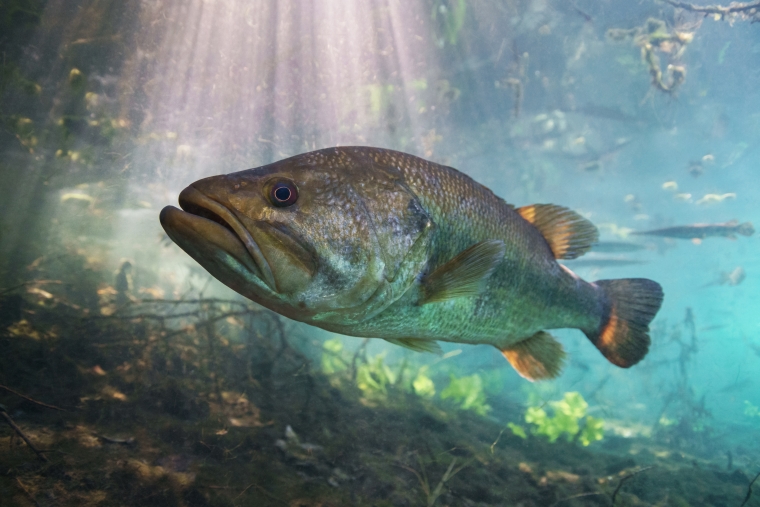
After launching the boat, most anglers steer towards shallow water when looking for largemouth bass — it makes sense. The shallows are prime habitat and Ontario’s lakes and rivers offer plenty of vegetation-rich bays, wood-strewn flats, dock-lined shores, and other bassy haunts. Abundance is good, but it’s challenging to pinpoint largemouth with so much area to cover.
One strategy, and our focus here, is finding where the bottom dips, creating a deeper pocket than in surrounding water. Locate a creek channel, a trench around vegetation or docks, or an undercut bank and you can bet bass are within casting range.
What follows are four examples of bottom depressions and recommended baits for catching largemouth from them.
Creek channels
“If I’m fishing where a creek is coming in, I’m always going to check if it’s formed a creek channel under the water,” said Daiwa pro Dave Chong of Aurora. “I find these a lot of times in back bays. If there’s a creek channel that comes out of the back and it’s six to seven feet and surrounded by a bay that’s three to four feet, guess where the fish are? They’re somewhere around that creek channel.”
A creek channel refers to an old streambed that’s been flooded over and now exists as a trench along the bottom. The feature is typical in dammed and flooded waterbodies.
Size, depth, and length of creek channels can vary. I’ve fished channels on the Ottawa and other rivers, plus in dozens of lakes where inflows create trenches. All of them were bass magnets.
Finding the channels
Finding creek channels is relatively easy. An elongated opening winding through a field of lily pads, pencil reeds, or other emergent vegetation can indicate a deeper channel below. A cut through deep grass near an inflow is another example of a likely spot.
Polarized glasses help make bottom depressions and veg growth visible, but stained water brings challenges. Technology helps. “Charts are so good for lakes these days,” Chong said, referring to ultra-detailed Garmin and Navionics maps. “A lot of times you can see creek channels on these maps.” Look for variations. Where the channel turns is a good spot, as is anywhere it intersects deeper water, a rock pile, or reef.
Depressions among vegetation
“One of my favourite things to fish is a depression in a milfoil bed,” said Bassmaster Elite angler and Shimano Pro Cory Johnston of Peterborough. “There’s no way to find it other than putting the time in, getting bites there, and figuring out it’s a depression. A lot of our best spots, that’s what it is, a depression in a bed.”
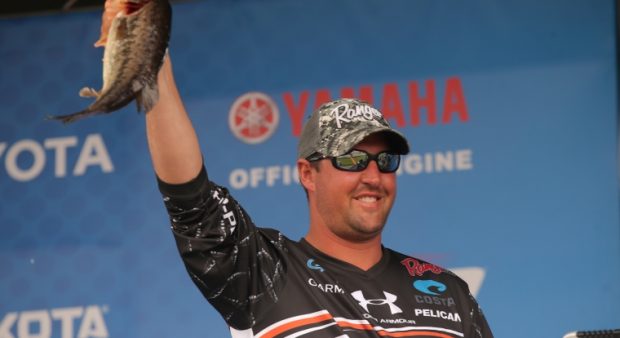
According to Johnston, bottom dips among vegetation beds are a universal largemouth hotspot. He’s seen it from his Kawartha home lakes down to Florida, where depressions in reeds helped him place 8th at this year’s Bassmaster Elite event on the St. Johns River.
Johnston finds 12 inches is the most common drop among bottom dips with vegetation, but he catches fish from dimples that drop only 6 inches. Will he flip a four-foot hole in grass? Absolutely. But, these spots are easier to locate and get more attention from the masses. Look for subtle depressions that are home to less pressured bass.
Finding hidden gems
Another of Johnston’s top largemouth spots are dents in the floor beneath floating, matted vegetation, though these hidden gems take legwork to find.
“I’ve caught them [from depressions] in a foot of water and in mats in 15 feet of water,” Johnston said. “That’s the nice thing about this style of fishing. It’s very lake specific and time-of-year specific, but with both these types of cover [mats and milfoil] there’s always largemouth in the stuff.”
Johnston isn’t alone when it comes to having waypoints marking deeper pockets in vegetation. Chong’s got them, too. While fishing with the Yamaha pro on Lake St. Francis, I watched Chong pick apart patches of pencil reeds and deeper grass, pitching to any little lane, opening, push-out, or — you guessed it — depression within the area.
While Chong admits finding dips within vegetation is tricky, changes in the density or type of vegetation are often clues there may be a hole or trough around. He’s found that large lily pads often grow in deeper parts of a bay.
Good cover plus extra depth equals happy largemouth.
Trenches leading to docks
It’s no secret largemouth love docks. A wooden dock with decent depth under it has high odds of holding a quality fish. Equally good is finding a dock with a cut of deep water leading to it.
Largemouth are like bank robbers. They like an exit route in case they need a quick getaway. Big fish in particular like residing within a few tailkicks of deep water and a trench leading to and from a dock is about as good as it gets.
Finding deep docks and trenches takes effort, but a moored powerboat is one clue you’re in the right area as its engine can scour the bottom, creating a trench.
Side-scanning sonar can offer a glimpse of the depth leading to structure and what’s underneath. This season Chong will be using Garmin’s new Panoptix LiveScope (Best of Show at ICAST 2018) to help him find deep-water docks. In my boat, Humminbird Side-Imaging sonar helps me pinpoint trenches, ditches, and creek channels.
Undercuts
Undercut banks are another good find. They’re created by current and waves eroding the lower portion of the shoreline, giving fish a “roof over their heads,” so to speak. Undercuts reach back toward shore. They can also have deeper water.
As is often the case, bass concentrate around anomalies. Anglers will want to find where an undercut extends further back under the shore, has more depth to it, or offers both these features. Chong uses this strategy when fishing the undercuts on Pigeon Lake in the Kawarthas. I’ve done the same on the Rideau River fishing with undercut-assassin and fellow OOD contributor, Justin Hoffman.
Baits
Dave Chong
Flipping Jigs and Texas Rigs Chong likes that flipping jigs and bulky creatures are big-fish baits. And, when bass are hunkered down in ambush, he says, an angler “needs to drop the bait right on their nose,” which is to say a weedless, vertical presentation is the best tool for the job.
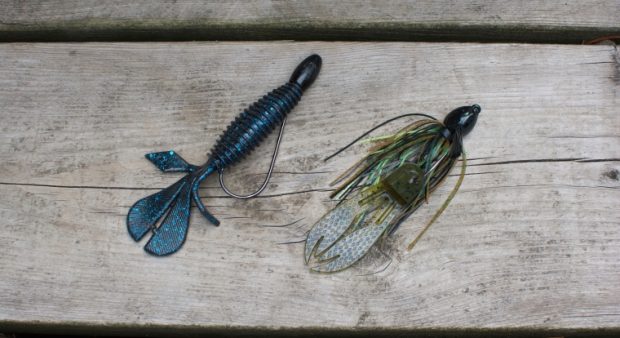
Good all-around
A four-inch Z-Man Palmetto BugZ rigged on a 4/0 Owner Jungle hook with a 5⁄8-ounce Ultra-Tungsten bullet weigh.
For heavy cover
Upsize to a 3 ⁄4- or 1-ounce Ultra- Tungsten bullet weight with 50-65 braided line.
For clear water
Change main line to 20- to 25-pound fluorocarbon.
Cory Johnston
“You want to start on the outside edge of it and slowly work your way into the thicker stuff,” Johnston said. “One of the biggest mistakes I see people make is they make long pitches, you lose so many fish doing this. Always start on the outside edge. It doesn’t matter what you’re fishing, make short pitches and work your way from the outside in.”
For working dips in milfoil
A 9⁄16-ounce Punisher Jig with a Zoom chunk trailer.
For largemouth under mats
Johnston punches the thick cover with a Jackall Cover Craw Texasrigged on a 4/0 flipping hook with a 3⁄4- to 11⁄2-ounce tungsten weight on 65-pound braid.
Stellar stickbaits
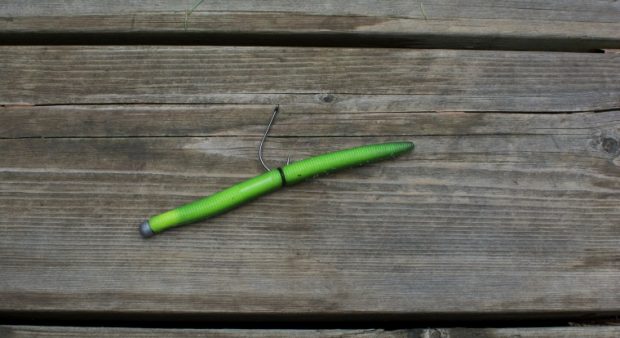
Try 5-inch (or larger) Yamamoto Senkos or Bass Magnet Quiver Daddy. Use them Texas-rigged, wacky-weedless, or Neko rigged.
Smaller and lighter jigs
For thin, sparse vegetation. Work a 3- to 41⁄2-inch tube jig or a bucktail jig. Hop and rip-jig them through creek channels and trenches. Use these on 20- to 30-pound braid with a 12- to 15-pound fluorocarbon leader.
Horizontal Moving Baits
Chong also casts horizontal-moving lures through open-water lanes above bottom depressions and trenches. His picks are a Yo-Zuri 3DR Series Squarebill crankbait and a 3⁄8-ounce Z-Man Jack Hammer ChatterBait. A spinnerbait also works.
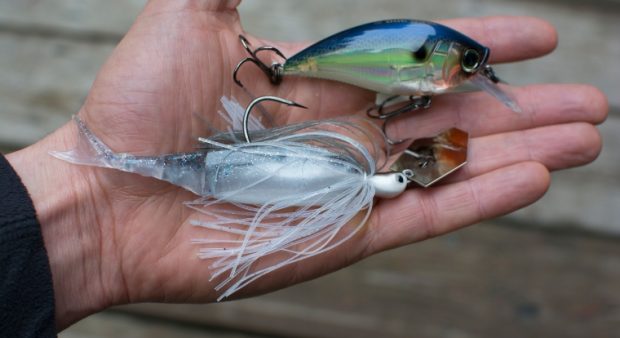
Don’t overlook frogs, either. Skimming one over a mat or through pads has caught me a lot of largemouth over the years. At the very least, it can provoke a bass enough to reveal its location. Quickly follow up with a flipping jig, Texas-rigged creature, or stickbait, and odds are good the fish will bite.
Speed Tricks
To keep noise to a minimum, Johnston uses a push-pole in skinny water and lets the wind push his boat from one spot to the next. Then, to avoid drifting past the zone, he anchors the boat using Power Poles, flips to his heart’s content, raises the poles, and does it all over again. Chong uses a similar approach.
Originally published in the June 2019 edition of Ontario OUT of DOORS magazine




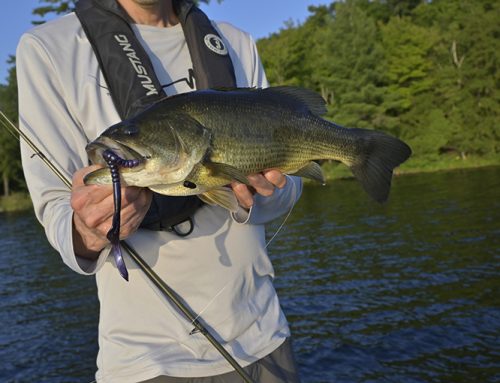
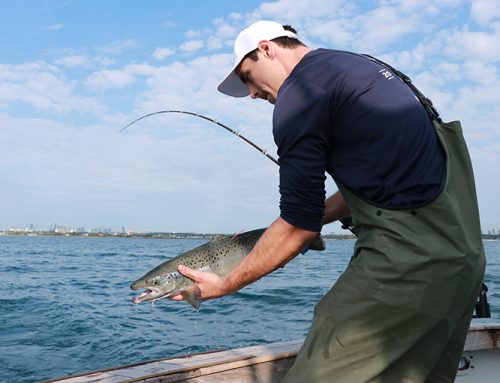
Leave A Comment